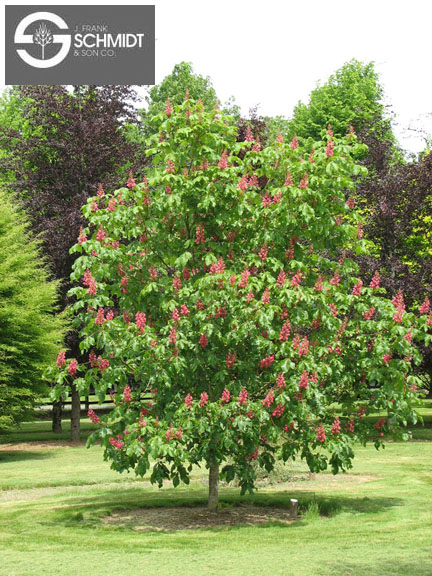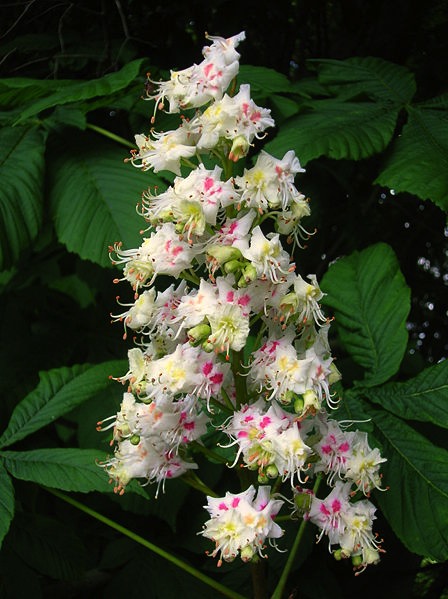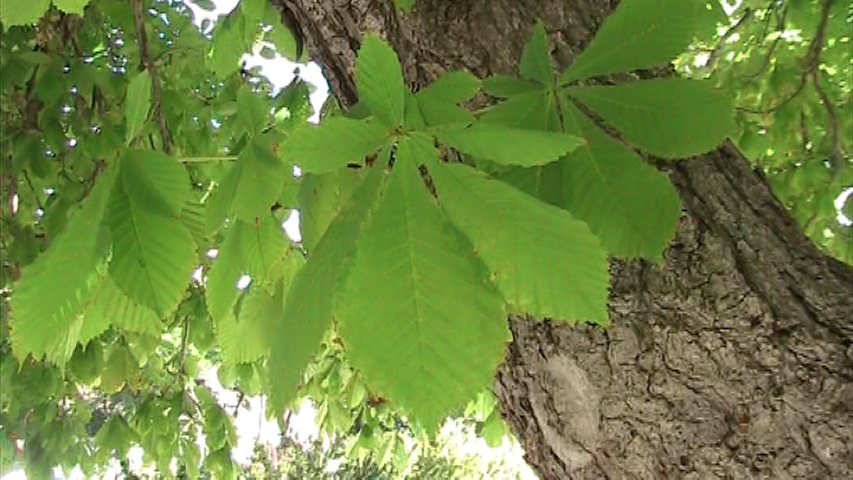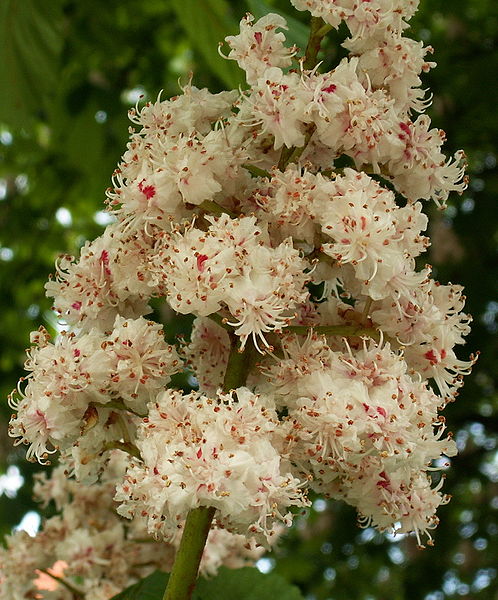| PSC 2620: Woody Trees and Shrub | Course Home | Week 7 |
Aesculus hippocastanum - Common Horsechestnut
Plant Viewer
 |
 |
| During the spring the tree has plentiful blooms that form at the terminal bud of the branches. | The flowers are arranged in 5-12 inch long panicles. The actual species has white blossoms. |
 |
 |
| The large leaf is palmately compound. It has 7 obovate leaflets with serrated margins. | The fruit forms inside a round spiny capsule. |
Plant Description
Aesculus hippocastanum, or the Common Horsechestnut, is a large deciduous shade and flowering tree. It grows in an upright form, 50-75 feet high with a 40-60 foot wide spread. It grows best in well-drained soil in a location where it will get plenty of sun. Prefers regular deep watering. It is an excellent tree thanks to its many ornamental features and unique leaf. The bark of the tree exfoliates in plates, revealing the orange undertones of the young bark beneath.
The dark green leaf is palmately compound is 4-10 inches wide with seven leaflets. Each leaflet wis obovate with a pointed tip. The pinnate venation pattern is very noticeable on each leaflet. The margin of each leaflet is doubly serrated. Aesculus hippocastanum leafs out early in the spring, but the fall color is a poor mixture of pale yellow and brown. When the leaves are on the tree, the Horsechestnut is easily identifiable from other trees.
The Horsechestnut has showy blooms in the middle of spring. The blossoms form on long panicles (5-12 inches) which emerge at the terminal buds of the branches. Each blossom is an inch or so wide. The blossoms are white, with highlights of yellow or pink. The blooms are very showy and will last for three to four weeks. Blooms are more profuse on portions of the tree that receive good amounts of sunlight.
By summer, the 2 inch chestnuts begin to form on the tree, encased in a green, spiky capsule. In the fall, the capsule turns brown and splits open to release the hard, reddish-brown seed. Th spent seed capsules become messy once they fall on the ground.
Landscape Use
It is a large tree that is best used as a shade tree and in large developments. Dirr discourages its use for modern residential lots, but I have seen plenty used on smaller lots in Utah and they look wonderful, in large part because our climate typically keeps the tree under 50 feet.
Points of Interest
If not watered deeply during the summer months Aesculus hippocastanum will develop leaf burn on the edges of the leaf. It will not damage the tree, but is not attractive.
Notable Cultivars
Aesculus x carnea Baumannii This cultivar has double blooming white flowers that last longer than the regular species. It produces no fruit.

Aesculus x carnea Briotti A smaller form of horsechestnut, it only reaches 40 feet tall and has an equal spread, creating a nice rounded shape. It has bright red flowers instead of the typical white blossoms.
